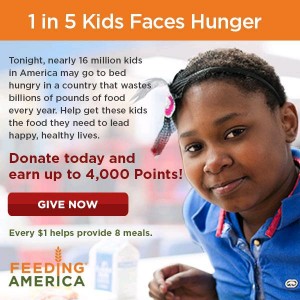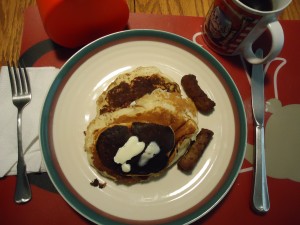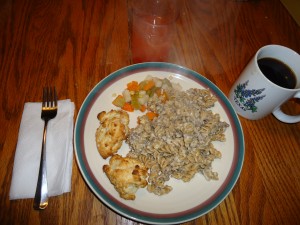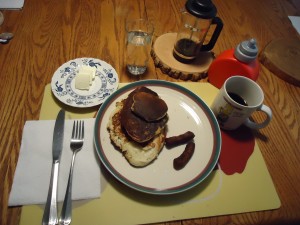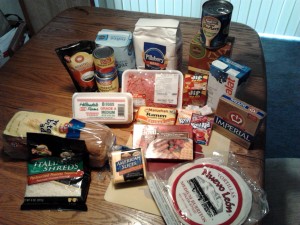I wasn’t sure what I was going to write about today, but my inbox gave me the answer. First, I need to explain some background. This website, and most websites, contain “affiliate links” of various kinds. I make (a currently small amount of) money with my websites: This one, W0IS.com, and richardclem.com. These affiliate links are links to other websites, such as amazon.com and WalMart.
If I need a picture of the Pillsbury Doughboy
, I simply go to Amazon
, find one that I like, and Amazon
takes care of hosting and providing the image. And if anyone clicks on the picture and buys something from that site within a certain time period (usually 24 hours, in the case of Amazon), my company gets a commission on the sale. The commission is generally 4-6%. This is all explained in legal mumbo-jumbo in my site’s privacy policy.
I use these links in a number of ways. First of all, if I need a picture of something, Amazon is an extremely convenient place to find it. They sell almost anything imaginable, and they have at least one picture of everything they sell. The pictures are hosted on their site, so I don’t need to worry about copyright clearances, uploading, or anything else. And occasionally, people will click on the pictures, perhaps out of idle curiosity. A certain percentage of those people will buy something from Amazon, and we get the commission.
Occasionally, I’ll talk about, or even recommend, a certain product. For example, I have a page about RV power adapters. People come to that page trying to figure out how to plug their camper in at home, I show them what adapter they need to buy, and I even tell them that they can get it at their local hardware store. But I also provide a picture and links, courtesy of Amazon, WalMart, and other online retailers. Even though I tell my visitors that they can buy the needed part at a local store, many of them go ahead and buy it online from one of these links.
Links of this type are used on many websites, and also in e-mail marketing. For example, I’m on the opt-in mailing list of MyPoints.com. Every day, I get a few pieces of spam e-mail from them. I open these spams, because they contain a link, and when I click on the link, I get 5 “points”. I never even bother reading the page that opens. I’m just concerned about getting my 5 points, because I can eventually redeem those points for cash. Every few years, I get $50 in my PayPal account as a result of all of this spam. Obviously, that money has to come from somewhere, and I assume it comes from those advertisers paying MyPoints for my click. In my case, they don’t get anything for their money, since I generally don’t even read their ad.
I’ve noticed a few charities advertising with MyPoints. Often, these are charities to which I am actively opposed, so I’m actually glad that I’m able to take a couple of cents out of their pocket. But it seems to me that paying people to click on a webpage is not a good use of charitable dollars. I realize that even legitimate charities have fundraising expenses, but the use of affiliate links just rubs me the wrong way. I have absolutely no qualms about telling people about a product that will suit their needs, and then getting paid for providing that service. And I have no qualms about using pictures from Amazon, knowing that they’ll make sales as a result, and that I’ll even get paid for referring those sales to them. But I can’t bring myself to say something good about a charitable organization, encouraging people to give their hard-earned money to that organization, and then getting some of that money myself. Yes, I suppose there’s a case to be made that this is a legitimate fundraising expense. But I wouldn’t feel right taking it. If I encourage you to buy stuff from Amazon, and if you do so, it will put money in my pocket, and I’ll feel good about it. But I wouldn’t feel good about it if I took some of your charitable dollars, so I don’t do that.
Later in this challenge, I’ll give you some ideas of organizations that can help people struggling with hunger. But rest assured that I won’t be providing any affiliate links.
I initially heard about the SNAP Challenge from media reports, such as those detailing the infamous $1.08 hard boiled egg. Upon doing some research, I found that one of the originators of the challenge is Feeding America, and I signed up for the challenge on that organization’s website. I did a bit of research, and it does seem to be a well-run charity. It’s a network of food banks, including one local one to which I have donated. It appears to be a very efficiently run charity, and the relevant statistics can be viewed at Charity Navigator. In particular, its fundraising expenses are listed as 1.5%, with administrative expenses of 0.4%, both extremely low.
I was very surprised this morning to get the following e-mail from MyPoints:
By clicking on the link, I would receive 5 points. And if I went on to make a donation through the link, I would receive the following:
Once you get to Feeding America, make a one-time/initial donation of $15 or more and earn 1,000 Points.
Sign up to make recurring monthly donations of $15 or more and receive up to 4,000 Points.
Those points would eventually result in cash back in my pocket, and that money needs to come from somewhere. I assume that the charity needs to pay for the advertising, which means that the money coming back to me would come from the charity. Again, I realize that charities have legitimate fundraising expenses. And, in fact, Feeding America’s expenses are extremely low. It’s also possible that these points are a donation from someone else, such as MyPoints itself. I doubt it, but it’s possible. It seems most likely that the points are paid for by Feeding America.
Again, there’s a strong argument to be made that this is a legitimate fundraising expense. But it just rubs me the wrong way. I should note that even though I normally click on these links, I won’t be doing so in this case. As far as I can tell, Feeding America does use the vast majority of its resources for its charitable purposes, and I’m not going to take a couple of cents from them. But normally, I would have. I would have taken a couple of cents from hungry Americans without even thinking about it. In the process, I wouldn’t have paid too much attention to the ad. But I would have seen the name on the screen for a split second, and my mind probably would have filed it away as one of those charities that does affiliate marketing. I don’t think that’s a good use of charitable dollars. In my case, sending the ad to me would have done more harm than good.
WHAT I ATE TODAY
Now that my daily political rant is out of the way, we’ll get to the details of how well I’m eating. After posting last night, I decided to bake some cookies. Once again, I turned to Joy of Cooking for ideas. The simplest recipe I could find called for vegetable oil, but I decided I could substitute melted margarine. It also called for vanilla and cinnamon or nutmeg, which I simply omitted. Finally, of course, I substituted my trusty self rising flour
for the flour, salt, and baking powder. I divided the recipe in half and came up with the following recipe, which netted about 20 cookies:
SELF-RISING ONE TUBE RADIO MARGARINE SNAPS
Combine 1/2 cup sugar and 5 TBSP melted margarine (about 15 seconds in microwave). Beat in one medium egg. Pour over 1-1/4 cups self rising flour and mix until consistent. Shape into balls and roll in sugar. Bake on lightly greased (with margarine) cookie sheet at 375F for 12 minutes.
I snacked on a few of the cookies last night and during the day today. The downfall of most of the challenge takers seems to be the failure to account for the fact that most Americans are accustomed to snacking during the day. Having something on which to snack really does make the process relatively painless. The cookies can be seen in my lunch and supper pictures below.
Breakfast consisted of the last of the pancakes and two sausages, along with syrup and coffee.
Lunch was pretty good, if I do say so myself:
BISCUITS AND ONE TUBE RADIO GRAVY
Chop 2 cooked sausage links. Warm in skillet. Add 1/4 can Progresso Creamy Parmesan Basil Recipe Starters Cooking Sauce and about 1/4 cup grated cheese. Simmer over low heat until cheese is melted. Add about 1 TBSP milk. Serve over biscuits.
I served this with some of the vegetables, Kool-Aid, coffee, and cookies for desert.
MORE SHOPPING
I did need to get a few more items, so I went after lunch. My first stop 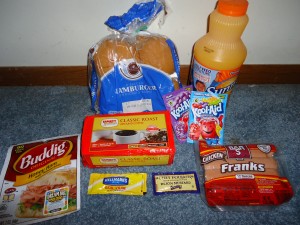 was Family Dollar. Despite the name, this is not a “dollar store”. In fact, almost universally, the prices were higher there than at either Rainbow or Dollar Tree. But this is even closer to my house, so I decided to check it out. I’m glad I did, because I scored myself 11.3 ounces of “Family Gourmet” coffee, which will be more than enough to get me through the rest of the week, for $2.25. I wish I had shopped here first, since this amount, with some conservation, would have gotten me through the week, and I wouldn’t have had to buy the little 7 ounce bag of Dollar Tree coffee. When I checked last night, I had four ounces left, so I would have had to buy more anyway. I think I have enough of a cushion for the luxury, so I bought myself the $2.25 brick of coffee. The first thing I did after getting home was making myself a luxurious pot. Between the brick and my remaining four ounces, I can now afford to splurge. I can drink as much coffee as I want, something that I’ve never heard another SNAP Challenge participant say. I have no idea whether you can buy coffee with SNAP benefits. As far as I’m concerned, you ought to be able to. If it’s not currently allowed, then that’s a reform whose time is due. How can we expect anyone to work if they don’t have coffee?
was Family Dollar. Despite the name, this is not a “dollar store”. In fact, almost universally, the prices were higher there than at either Rainbow or Dollar Tree. But this is even closer to my house, so I decided to check it out. I’m glad I did, because I scored myself 11.3 ounces of “Family Gourmet” coffee, which will be more than enough to get me through the rest of the week, for $2.25. I wish I had shopped here first, since this amount, with some conservation, would have gotten me through the week, and I wouldn’t have had to buy the little 7 ounce bag of Dollar Tree coffee. When I checked last night, I had four ounces left, so I would have had to buy more anyway. I think I have enough of a cushion for the luxury, so I bought myself the $2.25 brick of coffee. The first thing I did after getting home was making myself a luxurious pot. Between the brick and my remaining four ounces, I can now afford to splurge. I can drink as much coffee as I want, something that I’ve never heard another SNAP Challenge participant say. I have no idea whether you can buy coffee with SNAP benefits. As far as I’m concerned, you ought to be able to. If it’s not currently allowed, then that’s a reform whose time is due. How can we expect anyone to work if they don’t have coffee?
I also splurged by spending $1.00 on a 40 ounce bottle of Sunny Delight. I can get by with the Kool-Aid, but I do want a beverage that’s a little bit more portable. I did also get two more envelopes of Kool-Aid for 20 cents each.
This weekend, if the weather cooperates, we’re going to go camping in order to get the camper winterized. We also have a couple of Cub Scout events. Since those events include food that I’m not allowed to eat, I’ll need to bring something portable. Therefore, I went back to the supermarket to get some sandwich materials.
I’ll probably run out of bread if I make a bunch of sandwiches, so I got more. For a change of pace, I got 12 ounces of hamburger buns for 88 cents, even though a 16 ounce loaf of bread was the same price. I also got a small package of ham lunch meat for 69 cents. After putting those items in my cart, I found myself emboldened from having gotten free salt and pepper in my last visit to the store. I headed over to the salad bar and nonchalantly tossed a little of package of mayonnaise and one package of mustard into my cart. Once again, the friendly cashier put them in my bag without a second thought. So I’m good in the sandwich department.
Finally, to round out my meat for the week, I purchased a package of hot dogs for $1.15. I debated this purchase for a few minutes, since the exact same hot dogs are 15 cents less at Dollar Tree, which is right on the way home. Perhaps I’m being overconfident at this point, but I decided I was willing to pay 15 cents for the convenience.
My total bill for the day (including 10 cents tax, apparently on the coffee) was $6.47. My total expenditure so far is $26.01, meaning that I still have $5.49 to work with. I’ll probably need more milk, and I might need more margarine or oil. The worst case scenario is that I’ll need more flour. Even if I need all of those, I’ll still have 50 cents in reserve. So I think I’m in good shape, especially since I now know that my caffeine needs are taken care of.
While the rest of the family worked on the crock pot full of stew, I used the hot dogs to make “wiener winks”, a staple of the school lunches when I was growing up. It consists of a hot dog and cheese wrapped in a slice of bread and toasted for a few minutes in the oven.


